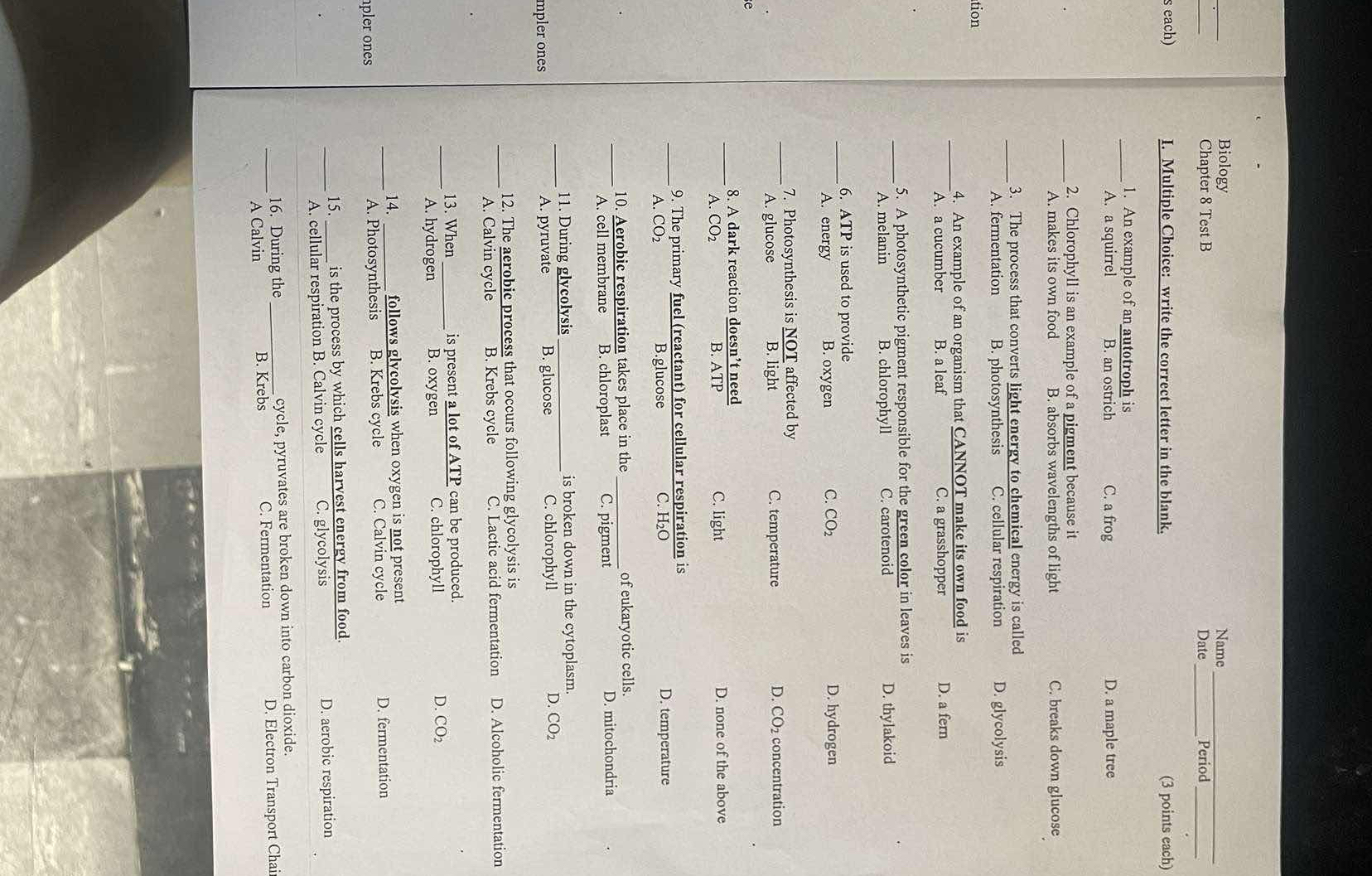During glycolysis, glucose is broken down in the cytoplasm. The process by which cells harvest energy from food is called cellular respiration. When oxygen is present, a lot of ATP... During glycolysis, glucose is broken down in the cytoplasm. The process by which cells harvest energy from food is called cellular respiration. When oxygen is present, a lot of ATP can be produced. The primary fuel for cellular respiration is glucose. An example of an organism that CANNOT make its own food is a frog. The main pigment responsible for the green color in leaves is chlorophyll. The process that converts light energy into chemical energy is called photosynthesis.

Understand the Problem
The question is part of a biology test focused on topics like photosynthesis, glycolysis, and cellular respiration. It requires the selection of correct answers to multiple-choice questions.
Answer
1. B, 2. C, 3. B, 4. D, 5. B, 6. B, 7. C, 8. B, 9. B, 10. A, 11. B, 12. D, 13. B, 14. B, 15. A, 16. B
- B, 2. C, 3. B, 4. D, 5. B, 6. B, 7. C, 8. B, 9. B, 10. A, 11. B, 12. D, 13. B, 14. B, 15. A, 16. B
Answer for screen readers
- B, 2. C, 3. B, 4. D, 5. B, 6. B, 7. C, 8. B, 9. B, 10. A, 11. B, 12. D, 13. B, 14. B, 15. A, 16. B
More Information
The processes outlined in the test involve glycolysis, cellular respiration, and photosynthesis, which are fundamental to cellular energy production and conversion.
Tips
Students often confuse glycolysis with respiration stages. Remember glycolysis occurs in the cytoplasm and does not require oxygen.
Sources
- Steps of cellular respiration | Biology (article) - Khan Academy - khanacademy.org
- 5.9: Cellular Respiration - Biology LibreTexts - bio.libretexts.org
- Cellular respiration - Wikipedia - wikipedia.org
AI-generated content may contain errors. Please verify critical information